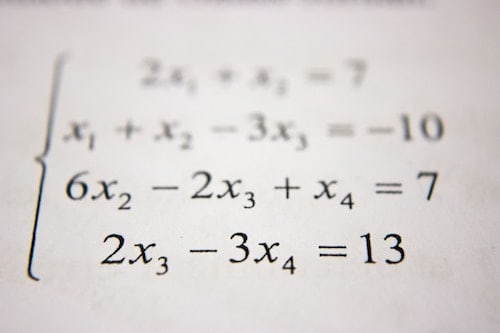by Margo Diewald, Senior Tutor, The MBA Exchange
Many future MBA applicants, when preparing for the GMAT or GRE, realize they need to refresh their math foundations and sharpen their core quantitative skills. These steps are essential to success on the standardized test that stands between them and admission to a top business school. However, candidates often underprepare for the Integrated Reasoning and Data Interpretation questions on the GMAT and GRE.
Given abundant time, most test takers understand the data visualizations and work through the associated questions. But these exams do not give you much time to do so. Data interpretation questions are among the hardest problems in the quantitative sections of the GMAT and GRE. These questions challenge students because to solve them, you need to integrate your skills related to interpreting word problems, interpreting data visualizations, setting up correct equations, and doing math, all while avoiding careless mistakes.
As a Senior Tutor at The MBA Exchange, coaching business school applicants for success on these required tests, I’ve seen many who find it difficult to solve data interpretations consistently, efficiently, and intuitively. Most test-prep books on the market today inadequately explain the solutions in a way that helps students isolate the part of their process on which they need to improve.
To help my GMAT and GRE prep clients pinpoint opportunities to strengthen their data interpretation skills, I have authored a book Off the Charts! Data Interpretation. Building upon its predecessor, All Your Word Problems Solved and using the same straightforward, easy-to-follow language and color-coding system, my book presents a systematic approach to tackling word problems about tables, charts, and graphs.From my years of teaching and observing a variety of students, I’ve observed potential weak points in processes related to solving data interpretation questions:
• Some individuals need to improve their visual-spatial reasoning abilities.
• Some need to heighten their awareness to subtle differences in how numbers are presented.
• Others need help correctly interpreting the wording of questions, so they know what information to extract from the data visualizations.
• Still others find it difficult to input information extracted from data visualization and efficiently perform required calculations.
Clients who have viewed the book’s content say:
• “I like that you’ve looked at this through the lens of a complete beginner.”
• “I didn’t know how much I needed this book. Thank you.”
• “This book helped me raise my score to an 8 on the integrated reasoning. The charts and graphs enabled me to dive through the multi-part questions of the GMAT much more effectively.”
This resource helps test takers understand, practice, and apply strategies to more intuitively and consistently solve even the most challenging data-interpretation questions. Readers can learn how to:
- Identify the right data to retrieve.
- Catch easily overlooked nuances that matter.
- Set up the right equation, if needed, to transform the data.
- Solve for the right thing.
- Solve for that answer as efficiently as possible.
- Understand why a wrong answer is wrong.
So, if you’re ready to take your GMAT or GRE results off the charts, I invite you to use my book, engage my test-tutoring services or – even better – do both! Achieving a top score as soon as possible will not only bolster your candidacy but also allow you to move on to address the other, equally important elements of your MBA admissions campaign.
GMAT® is a registered trademark of the Graduate Management Admissions Council, which neither sponsors nor endorses this product.
GRE® is a registered trademark of the Educational Testing Service, which neither sponsors nor endorses this product.
